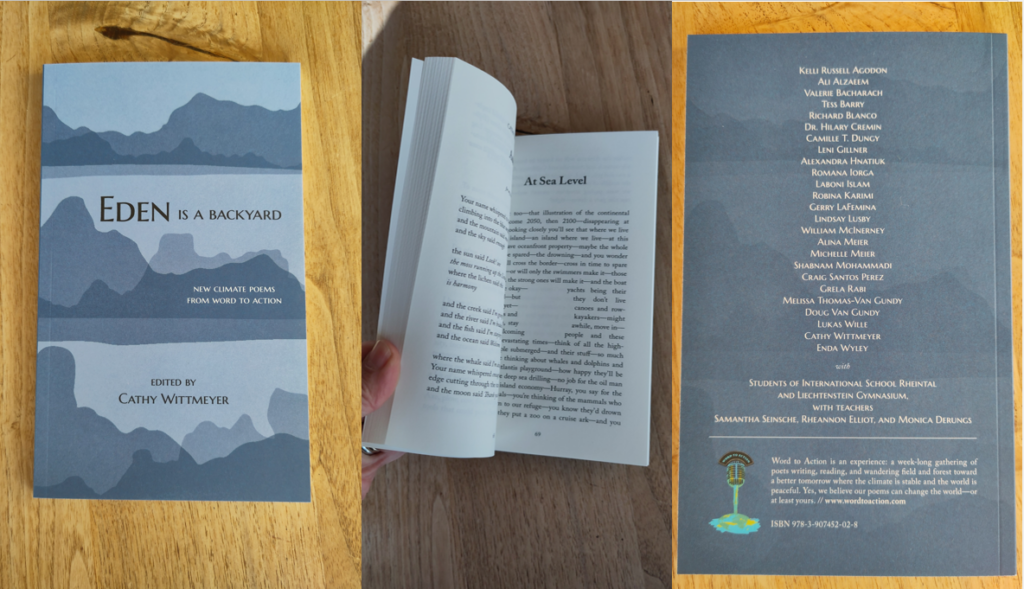
I found a bunch of big boxes on my doorstep! 500 copies of Eden Is a Backyard: New Climate Poems from Word to Action (Edition Eupolinos) are printed and ready to put in readers’ hands. The paper feels wonderful, the type face is beautiful and the cover art is just gorgeous (thank you Lindsay Lusby). As far as content, consider this: Rachel Carson said that no one could write truthfully about nature and leave out the poetry. The artists that graciously offered their words to this book beautifully weave nature’s truth throughout the poetry.
In the generative workshops where many of these poems were created, we started with the following science prompt:
Take a look at Camille Dungy’s poem, “Characteristics of Life” in Trophic Cascade. Look through a scientific journal like Nature or Science and find a climate change fact to start a poem. Use it as an epigraph, a title, or just a launching pad. Or search the books, Inconspicuous Consumption, The Sea Around Us, Silent Spring, the WWF’S Living Planet Report, or something you have. Be careful with your science…we are on a journey to understand, not to know as an end.
You will see headlines plucked from NPR, BBC, Science and Nature used as epitaphs and titles or braided into the poems. The cover artist, my daughter Isabelle Danzer, used the Liechtenstein mountain profile you can see from the location of the Word to Action retreat as her inspiration, but she notes that it could also be a coastline, a temperature gauge chart, or tidal gauge lines.
I hope you’ll find yourself immersed in the imagery and moved by the poems. At Word to Action readings, the audience gauges how each poem moved them by holding up emojis: a green heart for “I was moved,” a blue teardrop for “I was saddened,” and a flame for “I was fired-up to take action.”
The poets of Word to Action look forward to hearing from you about how you were moved, or inspired by their work. Send your emojis to them by Instagram (most have accounts) or via @wordtoaction or wordtoaction2020 [at] gmail.
The more clearly we can focus our attention on the wonders and realities of the universe about us the less taste we shall have for the destruction of our race.
Rachel Carson
“The aim of science is to discover and illuminate truth. And that, I take it, is the aim of literature, whether biography or history or fiction. It seems to me, then, that there can be no separate literature of science.”
If there was poetry in her writing, Carson believed, it was not because she “deliberately put it there” but because
It was a radical idea — that truth and beauty are not in rivalry but in reciprocity, that to write about science with feeling is not to diminish its authority but to deepen it
